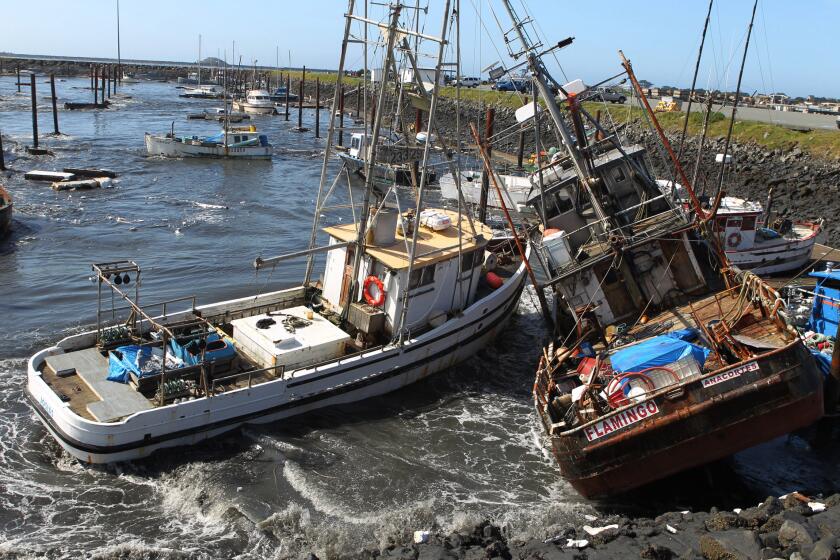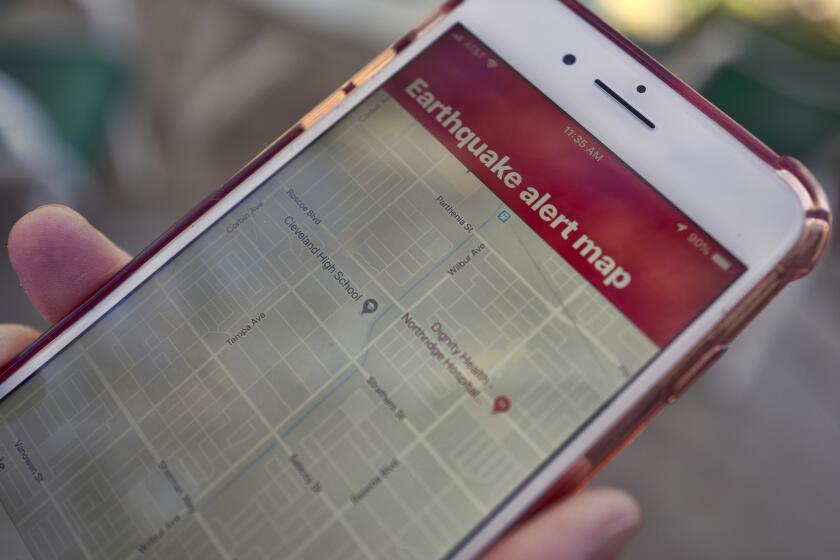CONGRESS / COMBATTING QUAKES : Bills Would Increase Research Funds, Provide for Insurance
- Share via
WASHINGTON — Last year’s Loma Prieta earthquake in Northern California caused 62 deaths and up to $10 billion in damage--90% of it uninsured. It also caused Congress to reassess federal research programs and propose a new earthquake insurance program.
The federal government already had in place an $87-million-a-year research program to find ways to predict quakes and minimize damage from them.
Four federal agencies carry out the program, with the lead role assigned to the Federal Emergency Management Agency. In addition to providing relief assistance after a natural disaster, FEMA coordinates the work of the other agencies--the U.S. Geological Survey, the National Science Foundation and the National Institute of Standards and Technology.
NEW FUNDING: Rep. George E. Brown Jr. (D-Colton) and Rep. Vic Fazio (D-Sacramento) have introduced legislation to increase funding for the hazard-reduction program to $200 million a year by 1994. The science, research and technology subcommittee of the House Science, Space and Technology Committee incorporated the bill into the reauthorization of the $87-million-a-year program.
The bill, awaiting floor action, emphasizes monitoring active faults and expanding the program to the Pacific Northwest and Midwest, areas previously neglected because of budget shortages. The Senate Commerce, Science and Transportation Committee approved a similar bill with lower spending levels.
Brown and Rep. Sherwood Boehlert (R-N.Y.) have introduced proposals for a national quake insurance program. It would be administered by FEMA but would be sold to consumers by private insurance companies.
The program would set up an insurance fund for homeowners and a re-insurance fund for the insurance industry as a backstop for disastrous losses. The homeowners insurance would be available only where local governments have adopted earthquake-resistant building codes. The program would also provide subsidized rates for owners of some older homes that cannot be economically retrofitted to meet modern standards.
THE TRADE-OFF: What puts teeth in the Brown-Boehlert insurance proposal is its ban on all federal aid for housing in areas at risk from earthquake damage unless local jurisdictions have adopted “hazard mitigation” building codes.
“Right now, the government provides disaster relief following a major earthquake,” Brown said. “This costs the taxpayers billions and does nothing to lessen the risks from future earthquakes. What you’ve got now is the government insuring--through disaster relief--unsafe buildings.”
The insurance industry has opposed linking hazard mitigation requirements to a federal insurance program. An industry-backed measure, introduced by Reps. David Dreier (R-La Verne) and Al Swift (D-Wash.), would offer insurance to all comers regardless of whether their communities had adopted earthquake-resistant building practices.
Dreier maintains that earthquake insurance must be offered to everybody to spread the risk and that mandatory hazard mitigation defeats the purpose by reducing eligibility. He said he would not preclude insurance companies from offering lower rates to homeowners who “retrofit” their houses to resist quakes, just as nonsmokers get lower life insurance rates.
“A more cost-effective approach might be to require new construction to abide by seismic building codes while, for older homes, insurance premiums could be structured to encourage homeowners to pursue cost-effective mitigation measures,” Dreier said.
Both bills are in committee, and Dreier minimizes the inherent conflict.
“George Brown and I want to work together on this. We don’t see our bills as rivals but as an opportunity to put the issue of earthquake insurance on the table for discussion.”
More to Read
Sign up for Essential California
The most important California stories and recommendations in your inbox every morning.
You may occasionally receive promotional content from the Los Angeles Times.










